Archives Experience Newsletter - January 10, 2023
The Stars and Stripes Forever
The new year is a rebirth, a time to start fresh. We set goals, make plans and sometimes reinvent ourselves. Just like our newsletter—2023 brings a new design and more terrific discovery of the Archives’ records.
In addition to being a time to flip the calendar, January 1st is also the birthday of our American flag—in more ways than one. New Year’s Day was the first day an early version of our flag was flown, and it’s also famed seamstress Betsy Ross’s birthday. So what better way to celebrate a new year than to recall the symbol of a new nation?
In this issue
The woman who became Betsy Ross was born on New Year’s Day in 1752…
Betsy Ross: The Myth and the Legend
The story that Betsy Ross sewed the first U.S. flag…
A New Constellation
The first national—although unofficial—flag that flew after the American Revolution began was called…
History Snack
Betsy Ross: The Woman
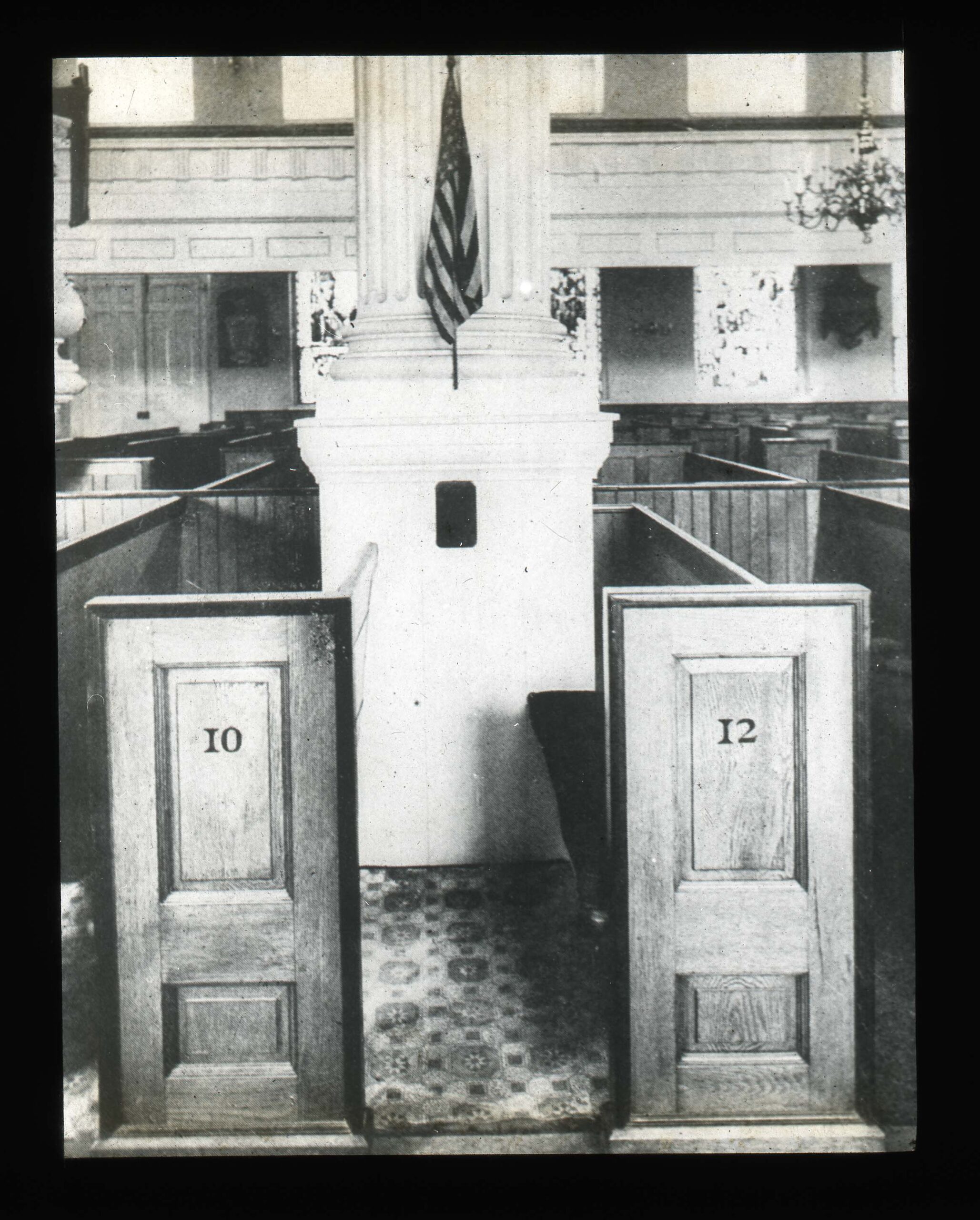
Betsy Ross’s pew at Christ Church, Philadelphia
National Archives Identifier: 93972835
The woman who became Betsy Ross was born on New Year’s Day in 1752, the eighth of 17 children, in Gloucester City, New Jersey, and named Elizabeth Griscom. Her family were members of the Society of Friends (the Quakers), so Betsy grew up in that faith and was educated in Quaker schools. She apprenticed to an upholsterer in Philadelphia in 1773, where she met another young apprentice, John Ross, who came from a prominent family that included one of the signatories of the Declaration of Independence. The pair eloped, which caused the Society of Friends to expel Griscom because John Ross was a Protestant.
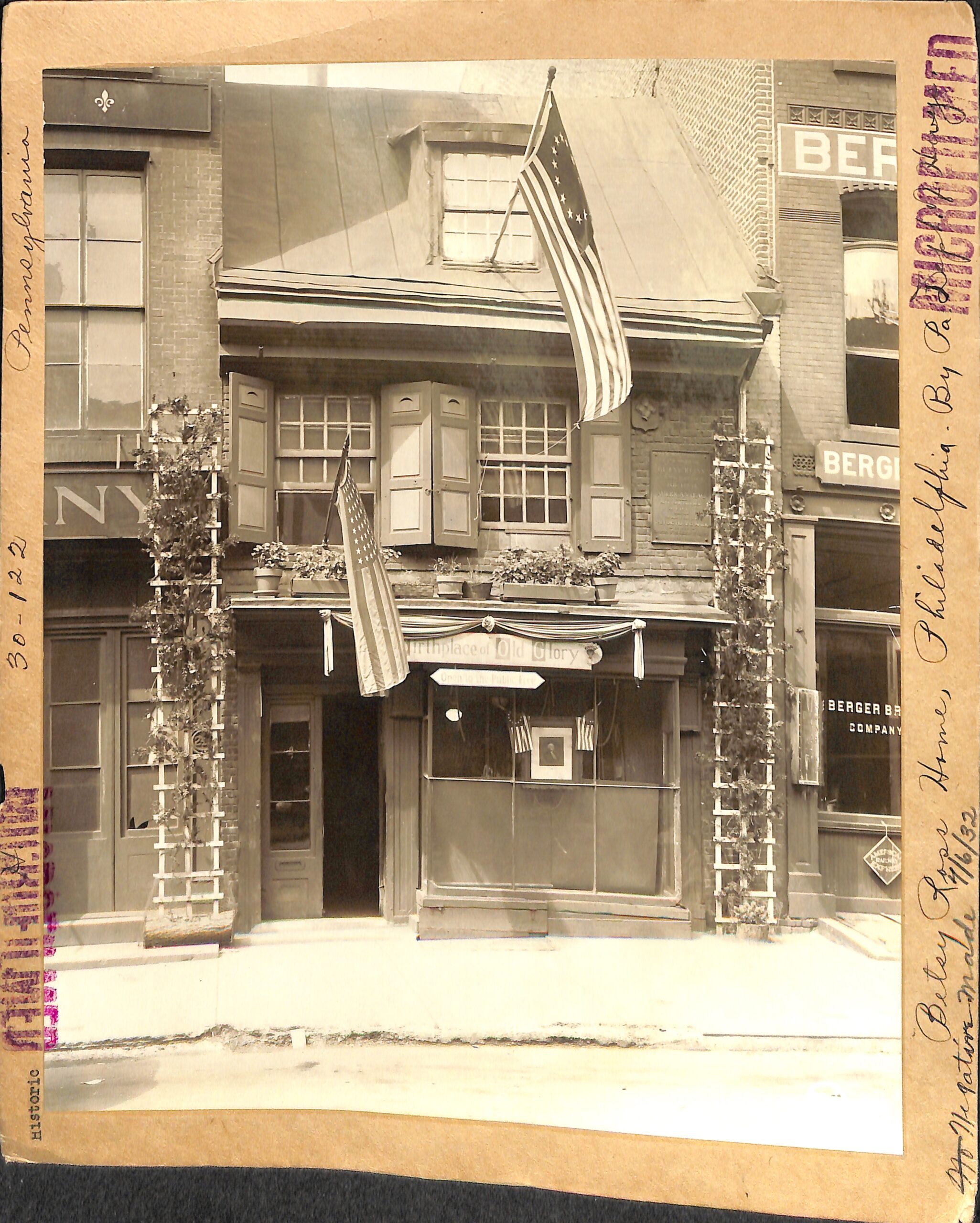
Betsy Ross home, Philadelphia
National Archives Identifier: 135803740
The Rosses attended Christ Church, an important Episcopal church in the Old City of Philadelphia, where John Ross’ father was an assistant rector. Many prominent American patriots, including George Washington and Benjamin Franklin, attended services at Christ Church as well. Sadly, John Ross was killed very early in the American Revolution in 1776. By this time, Betsy Ross was running her own sewing business in Philadelphia. She married Joseph Ashburn in 1777, but the British captured the merchant marine brigantine he was serving on, and Ashburn died in prison in England in 1782.

Betsy Ross monument
National Archives Identifier: 44171788
Ross married a third time in 1783, to John Claypoole, who had known Ashburn in prison. They ran an upholstery business and joined the Free Quakers, a group who supported the American Revolution and thus were at odds with the Quakers’ official pacifist stance. Throughout the war, Betsy Ross sewed tents for the Continental army and pennants for Pennsylvania’s navy. She ran her business with her husband and a succession of other relatives, including her daughters, granddaughters and nieces. The exact building where Betsy Ross ran her upholstery business has never been identified for certain. She died in 1836 at the age of 84, having borne seven children.
Despite the widespread and very popular urban legend, Betsy Ross almost certainly did not sew the first U.S. flag, but she is notable for several reasons, nonetheless. First, she was a genuine U.S. patriot who lost two husbands to the American cause while she was still quite a young woman. Second, she ran her business herself while managing her home and raising her family, at a time when women were usually strictly confined to the home. She lived a long, productive life and apparently was respected and well thought of in her community.
Betsy Ross: The Myth and the Legend
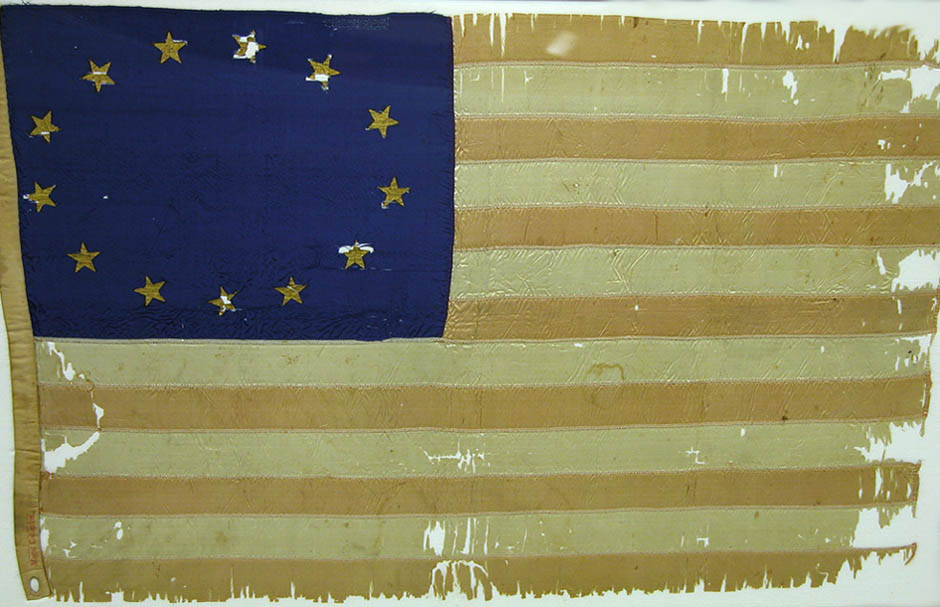
American flag sewn by Betsy Ross
NARA’S Prologue Magazine
The story that Betsy Ross sewed the first U.S. flag and, indeed, had a hand in designing it appeared in 1870, when William Canby, her grandson, presented a paper titled “The History of the Flag of the United States” to the Historical Society of Pennsylvania. Canby stated that a committee led by General George Washington visited his grandmother at her upholstery shop in Philadelphia and asked her to sew the first national flag. He said that Ross had consented and had suggested changing the six-pointed stars that the committee asked for to five-pointed stars, which the committee agreed to.
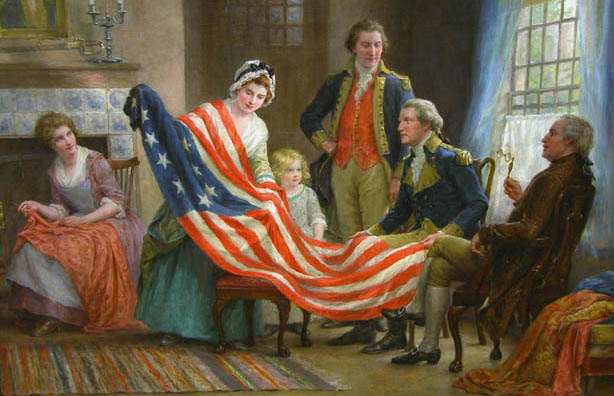
Imagined meeting between George Washington and Betsy Ross
NARA’S Prologue Magazine
The story spread via newspapers and magazines, and then in 1873, Harper’s Weekly, one of the most important publications in the country, repeated Canby’s story as fact, adding the considerable weight of its journalistic credibility to the tale. Painters added fuel to the fire, in particular Charles H. Weisgerber, whose 1893 work “Birth of Our Nation’s Flag,” in which Betsy Ross sits sewing the flag while George Washington and two other gentlemen watch.
Unfortunately for this very romantic tale, there is little to no factual evidence to support it, starting with the fact that there does not appear to have been a committee assigned to commission a flag. It seems much more likely that Francis Hopkinson, a naval flag designer who signed the Declaration of Independence, also designed the Stars and Stripes. He sent the Continental Congress an invoice in 1780, asking for a cask of wine in reimbursement for designing the Great Seal and “the flag of the United States of America,” but Congress declined to pay him for his services.
A New Constellation
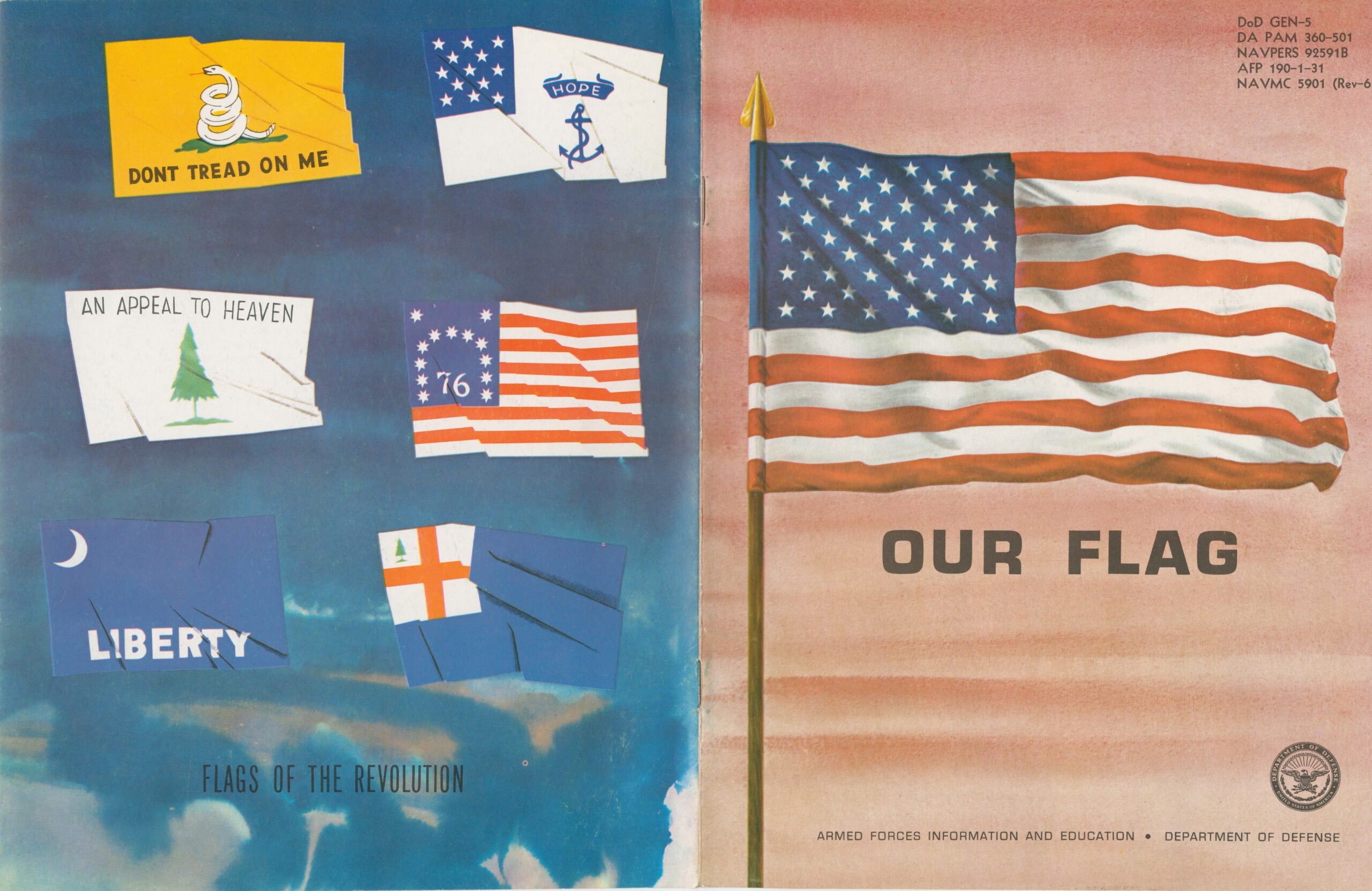
The “Our Flag” pamphlet tells the story of “Old Glory” and educates on flag etiquette.
National Archives Identifier: 95117454
The first national—although unofficial—flag that flew after the American Revolution began was called the Continental Colours or the Grand Union Flag, raised by order of General George Washington at Prospect Hill in Charlestown (now in Somerville), Massachusetts, on New Year’s Day, 1776. By then, the colonies had been at war with Great Britain for several months. The Grand Union flag had 13 horizontal stripes, most likely red and white or red, white and blue, and the Union Jack in the canton, the upper left-hand corner of the flag. Some historians have suggested that by quartering the Union Jack on the flag, the colonists were hinting that they hoped to reconcile with their mother country, but those hopes were swiftly dashed.

Clyde O’DeLand: Raising the first flag at Independence Hall, Philadelphia
National Archives Identifier: 535748
Congress approved the first official flag, the one that came to be called, on rather slim evidence, the Betsy Ross flag, on June 14, 1777. Its official name is “the Stars and Stripes,” and the resolution that gave birth to it reads, “Resolved, that the flag of the United States be thirteen stripes, alternate red and white; that the union be thirteen stars, white in a blue field representing a new constellation.”
Some have stated that the stripes are actually more important than the stars because the stripes are symbols of rebellion. The stars stand for the original 13 colonies, and since the resolution that authorized the Stars and Stripes did not specify how the stars should be organized, many different configurations appeared on flags that flew above forts and military units throughout the revolution.
Some have also suggested that George Washington’s family’s coat of arms, which features three red stars on a white field above two white and two red horizontal bars, may have influenced the design of the Stars and Stripes. It is, of course, impossible to know for certain, but it is a tantalizing possibility.










